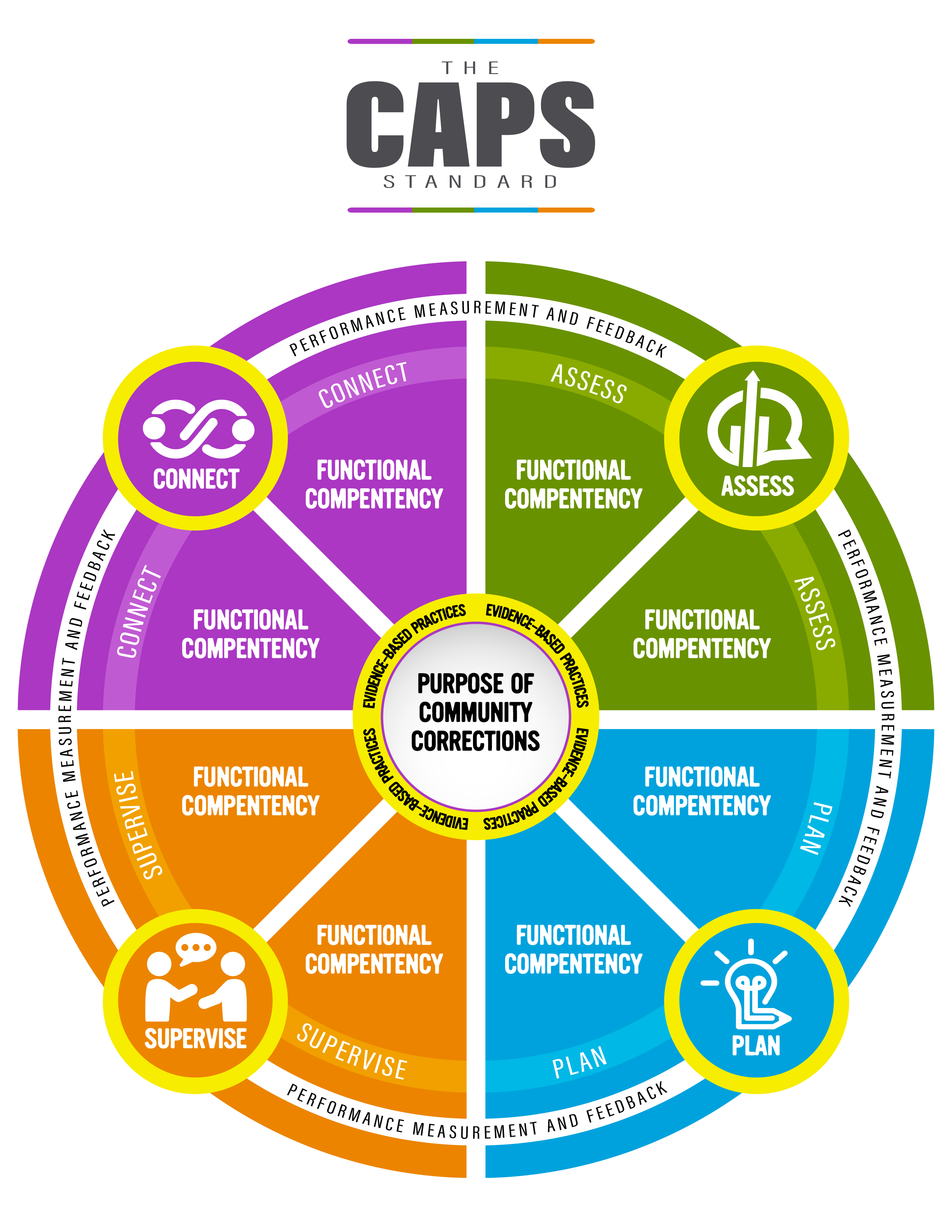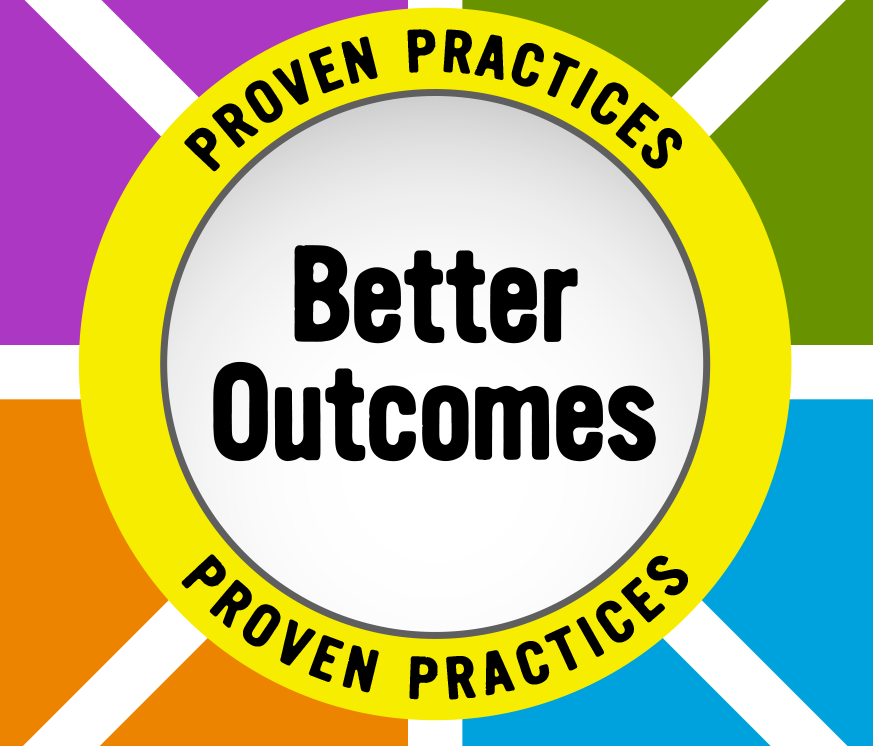
The CAPS Standard is represented by the graphic you see here and corresponds to the work of almost everyone employed in a community supervision organization.
Whether you are a brand new staff member or long-time leader at your agency, the CAPS Standard is your guide to employing proven methods for the benefit of yourself, everyone in your agency, and those you serve.

Making A Difference In People's Lives
At the center of it it all is The Why. This is the purpose of community supervision in the 21st Century that buoys everyone's work within community supervision.
When you know and are reminded of the reason behind the task (working toward better outcomes), motivation and excellence are easier to come by.
![]()

Proven Practices
Proven practices, including evidence-based practices where relevant) are necessary to achieve the purpose of community supervision. These practices answer the question, "What tools and strategies can I use to be most effective in my work?"
Proven practices within community supervision range from completing assessments and applying cognitive- behavioral interventions to using restorative justice and desistance strategies. The CAPS Standard attempts to incorporate knowledge about proven practices in a way that can support the complex and shifting needs that exist in the criminal justice landscape. It is a pathway for supervision clients to have their best chance to succeed. It also helps ensure you succeed in your position and that your agency excels, too.


Foundational Competencies
The four "Foundational Competencies" help you focus on what matters most: Connect, Assess, Plan, and Supervise. These competencies are the same for all practitioners no matter your role within community supervision.

Connection enables trust and collaboration. Tune in to others' needs, objectives, and challenges.

Engage with your work strategically. Assessment data helps you focus on the right issues to make the most difference.

Develop a plan, test it in practice, refine, and repeat. Continue to improve — from each individual case level to the organization itself.

Oversight and guidance keep the individual and the agency moving in a positive direction. Gain insights and tools to support your own growth and those you support.

The CAPS Standard And You
The CAPS Standard sets the goalposts for how community supervision agency staff contribute to the agency's mission. Use this website to find resources that match your role.
Community Supervision Officers

Working directly with people on supervision, an agency's officers, case managers, reentry specialists, employment and housing specialists, and others incentivize positive change.
Competencies:
1. Engaging people under supervision
2. Engaging external supports
3. Assessing risks, needs, and strengths
4. Assessing responsivity
5. Conceptualizing cases
6. Planning a case approach
7. Choosing effective approaches
8. Using supports, incentives, and sanctions
Supervisors

Supervisors are the backbone of organizations and are often the catalysts for improvements.
Competencies:
1. Engaging officers
2. Facilitating community engagement
3. Reviewing assessments
4. Evaluating staff skills
5. Reviewing case plans
6. Planning professional development
7. Developing staff
8. Ensuring fidelity and quality
Executives

Executives connect with staff and stakeholders at all levels to ensure the vision is actualized and experienced as intended.
Competencies:
1. Engaging stakeholders
2. Motivating staff
3. Assessing capacity to lead change
4. Assessing organizational culture
5. Defining the vision
6. Planning for implementation
7. Monitoring implementation
8. Promoting sustainability
Implementation Staff, Trainers, & Researchers

The effectiveness of implementation staff depends on engaging those throughout the organization.
Competencies:
1. Engaging resources
2. Soliciting feedback
3. Assessing organizational capacity
4. Assessing system elements
5. Conceptualizing implementation
6. Planning for implementation
7. Creating feedback loops
8. Monitoring fidelity

